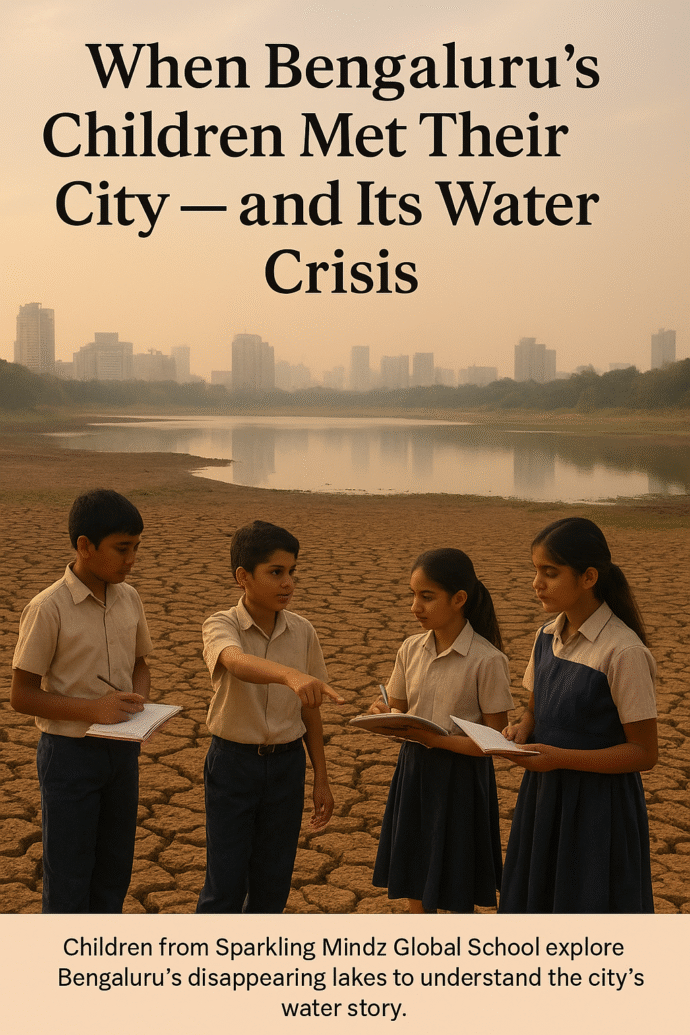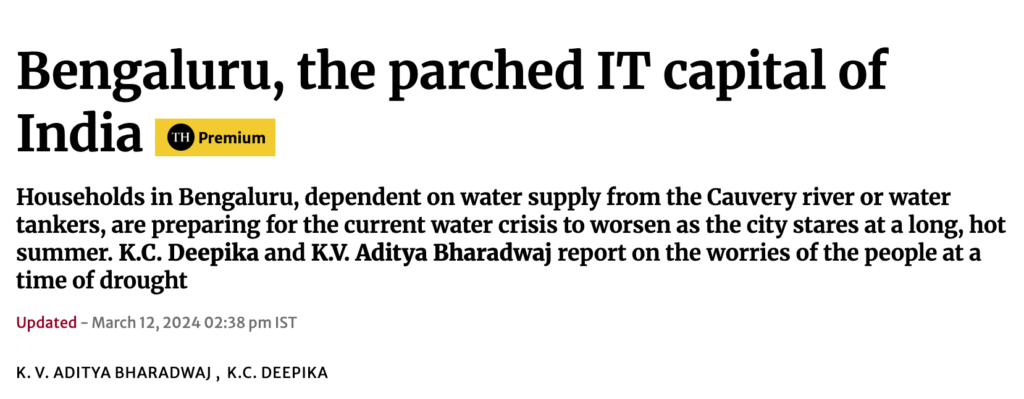when bengaluru’s children met their city and its water crisis

Can you imagine your child’s future without water?
In January 2024, Bengaluru woke up to headlines screaming “Water Crisis!” and taps running dry. Schools were shut, water was rationed, and fear was written on the faces of children. “Is this our future?” one asked. That moment became the beginning of a different kind of learning — one not found in textbooks.
The Dual Crisis Our Children Face
The truth is, our children today face not one but two crises — internal and external.
Internally, a culture of consumerism and social media constantly chips away at their sense of self-worth. Screens replace real-world play, likes replace friendships, and children start believing they are never “enough.”

Al Jazeera headline on water scarcity in Bengaluru in 2024

The Hindu headline on water scarcity in Bengaluru in the year 2024
Externally, their physical environment mirrors this chaos. Bengaluru or any growing Indian city really groans under the weight of over-urbanisation. Potholes, pollution, endless metro construction, disappearing green spaces, rising asthma and anxiety levels… not exactly a dream childhood. The insufficient, cramped, and potholed road infrastructure, the perennial, unending metro construction, congestion and traffic jams, shrinking green spaces, pollution everywhere, garbage strewn around, children born with asthma, increasing cases of cancer, a city groaning under the weight of its own unrelenting expansion in all directions.
No wonder, when asked what they thought of their city, the children replied:
“Garbage City.”
“Traffic-Jam City.”
“Too crowded.”
“Any City.”
The disconnect was loud and clear.
Connecting with My City – Bengaluru
At Sparkling Mindz Global School, educators turned that frustration into curiosity. The children were asked a new question:
“Does Bengaluru meet a child’s needs?”
Out they went — walking through Petes, Keres, Durgas, and Thotas — exploring markets, lakes, forts, and parks.
They spoke to vendors in Malleswaram Market, got lost in stories at Cubbon Park, and stood silently before the ruins of Bengaluru Fort. Something shifted. The city stopped being “shitty” and started feeling alive again, messy, yes, but full of history and resilience.
Children began to belong. And that changed everything.
We, the Children of Bengaluru
Through research and exploration, they discovered:
- Bengaluru’s population exploded from 7.5 lakh in the 1950s to 1.4 crore in 2025 — most of us are immigrants here, disconnected from the city’s roots.
- The city once had a brilliant interconnected lake system — man-made, community-managed, and self-sustaining.
- Encroachments destroyed that system, leading to both flooding and water scarcity — twin disasters of our own making.
The children realised: if they don’t belong, they’ll only complain. But if they do belong, they’ll care enough to act.
From Problems to Projects in Bengaluru
When the 2024 water crisis hit, these children were ready. Using a human-centred design approach called P2P Labs (Problems to Projects Labs), they:
- Researched Bengaluru’s water sources
- Mapped the interconnections between lakes
- Interviewed stakeholders
- Created a systems map showing how encroachments broke the water recharge cycle
Their work culminated in an awareness campaign and a powerful annual-day show: “Bengaluru: Once a City of Lakes.”
They didn’t stop there — performances at metro stations, public spaces, and conferences followed. Each show, each signature, each conversation — a drop in the ocean of change.
The Way Forward for Bengaluru
Water scarcity may have been the crisis, but what these children truly unearthed was something deeper — a sense of belonging.
Because when children connect with their city, they don’t just inherit its problems.
They help solve them.
This story is part of an ongoing Urban Voices series by the author exploring how children in Bengaluru are rediscovering their city, its ecology, and their role as young change-makers.

One thought on “When Bengaluru’s Children Met Their City and Its Water Crisis”